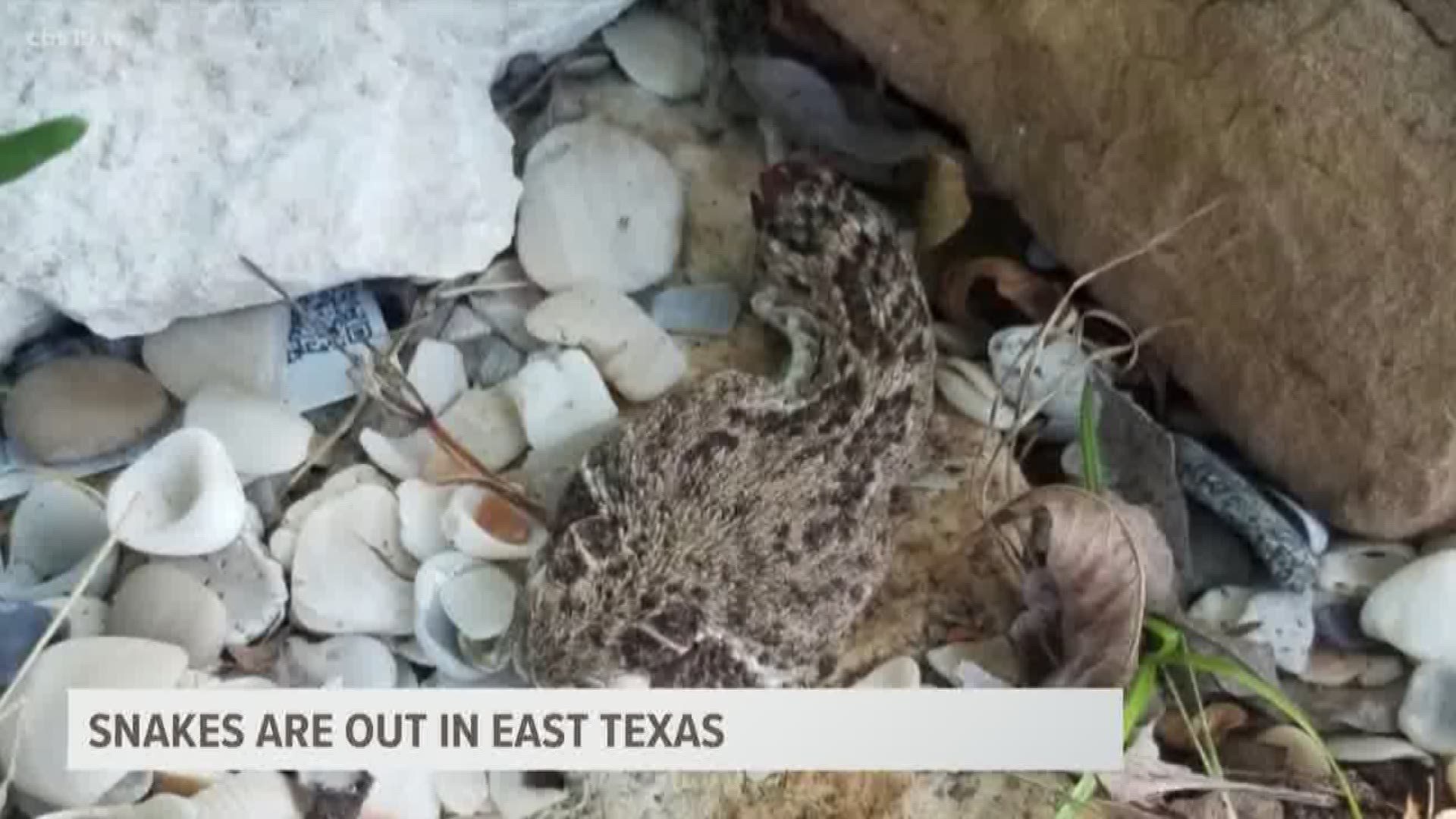Tyler, TX — It's still two weeks away from the official start of summer, but the local snake population is already out and about.
Experts say the warmer weather has caused the snakes to slither away from their comfortable winter slumber early, and active snakes could mean bad news for people not to mention, pets.
In East Texas there's 25-30 different types of snakes; 5 of them are venomous with plenty of places for them to hide; brush piles, tall grass, areas near creek beds
According to Michael Clanton, a reptile handler at the Caldwell Zoo, the main thing to know if you are bit by a snake is to get to the hospital, especially if it's poisonous.
"If you get to the emergency room within an hour or so, then most likely you're going to be fine," Clanton said.
For your pet; get them to the vet.
More than likely they will be okay but their survival can be dependent on how venomous the snake was, how big the dog is, it's age, and even the location of the snake bite.
The three most common snakes we see are the Texas Rat snake, and the Copperheads and Cottonmouths, both of which are venomous.
According to Clanton we see those species the most because, "they live close to where people live."
For the most part people do two things when they see a snake; chop their head off, or run away.
If you do chop the head off, leave it alone for a bit, the snake can still move and bite you for sometime after it's head is separated from the rest of it.
Also, those identifying features to tell you if a snake is venomous or not aren't exactly accurate, according to Clanton.
"It can be very difficult to tell some species apart. We generally recommend people don't get close enough to snakes to make identifications like what kind of shape is the pupil and that kind of thing. You have to get awful close to see if the pupil is a vertical pupil or a round pupil," the reptile handler said, and explained another. "People say if it has a narrow shape or a triangle shaped head that it's venomous and that's definitely not necessarily true. A lot of snakes will mimic that and will flatten their head out in order to make themselves look bigger and more threatening."
He explained it doesn't matter if the snake is venomous or non-venomous, most snakes want to be left alone and will strike if you bother them.
If a snake just keeps coming towards you then most likely you are between him and his escape route… especially if you are near water.

